The University of Mars
is an immersive video game that can be used to learn astronomy at the introductory college level. It can be used for an entirely online general education college course in astronomy or used in a blended learning environment (such as a flipped classroom).
This course has successfully been taken by thousands of students at Penn State University over the past few years.
AstroVenture is looking to reach a larger audience by partnering with other colleges and universities so that they can offer it to their students.
Students: Learn by Playing
Students build their knowledge of astronomy by playing the game.
The engrossing story gives the students context for the importance of each topic.
Each lesson contains background information, a minigame which functions similar to a lab, and a quiz to ensure the student has retained the knowledge
The game is available to individuals at a cost of $40. This includes technical support for running the game.
We will provide students with practice tests.
Instructors: Resources
The course is designed to engage students in all of the content in a one-semester "Astro 101"-style course.
We have compiled all of the learning objectives for the game for you to use to compare to your current course content.
Students -- you can use these as your study guide!
We will also provide example test bank questions (sample here)
We will provide students with any required technical assistance through this site.
First Unit Demo Downloads
Select your Operating System:
Student Testimonials
"The interactive video game was most entertaining way of learning I have experienced."
"The fact that this class is online and has a very interesting way of communicating the information we need to know helped me stay engaged and understand the content."
"The game provides a surprisingly fun way to learn."
"The video game is awesome! I like the feature to replay old lessons as well as Copper's quizzes that were always available. The characters, while stereotypical (especially the really smart guy), had a heart to them that made me enjoy the course more. I can tell there was a lot of passion put into the creation of the course."
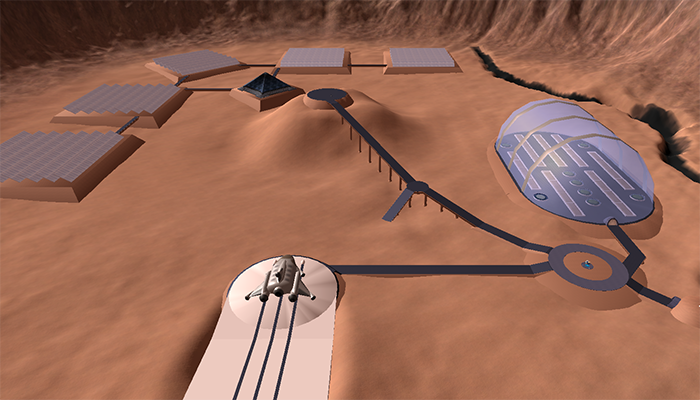
The video game is set in the first colony on Mars and students are the first exchange students with Mars University. This setting is used to compare the environments of Mars and Earth (e.g. surface gravity, seasons, moon phases, and atmosphere).
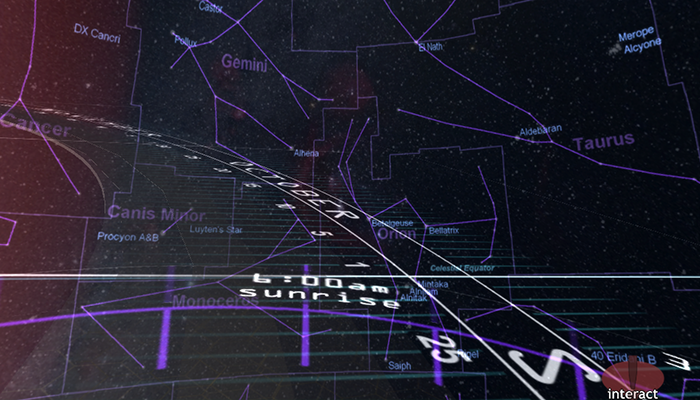
Mini games in the Mars University virtual reality lab are designed to provide an intuitive understanding of concepts such as surface gravity, moon phases, spectroscopy, constellations, the Sun's structure, the different galaxy types, and events in the history of the early universe, etc.
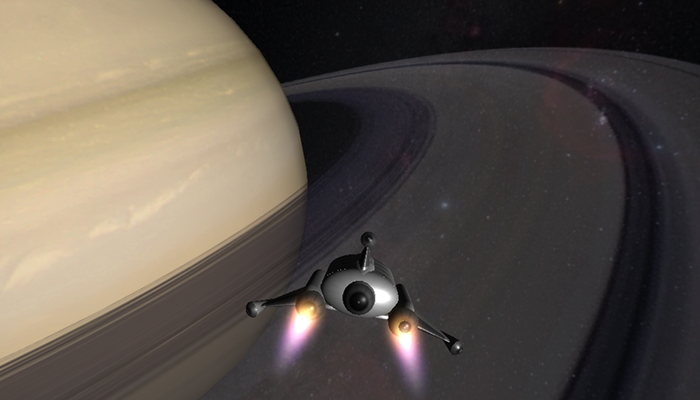
Students are able to actually fly through the Solar System and land on several planets and moons to explore their surfaces first-hand. This makes it much easier to remember the properties of the planets and moons.
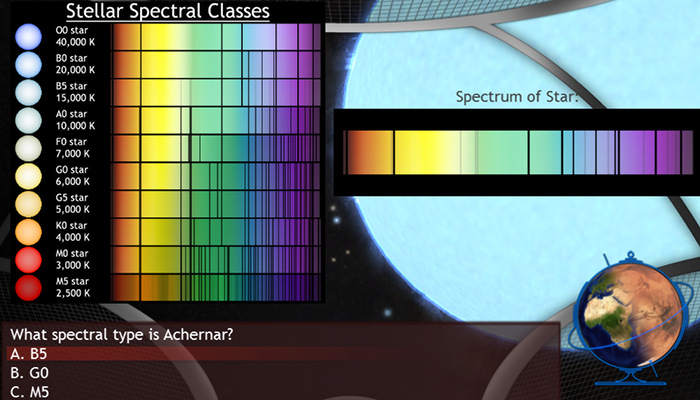
Students are able to understand how stars have different colors, sizes, luminosities, and evolutionary histories by flying to them, collecting their properties, and making a graph showing the differences between the nearest and the brightest stars.

Students fly from galaxy to galaxy to understand the different types of galaxies in the universe at present and to compare to galaxies in the distant past.
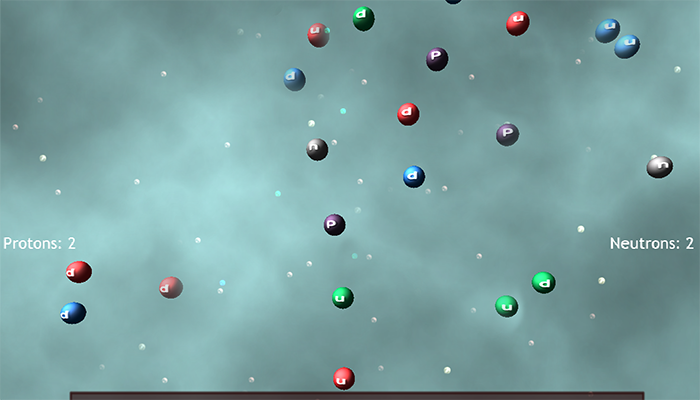
Students are able to construct the history of the universe through a series of mini-games that construct atoms step-by-step starting with their component quarks and electrons.